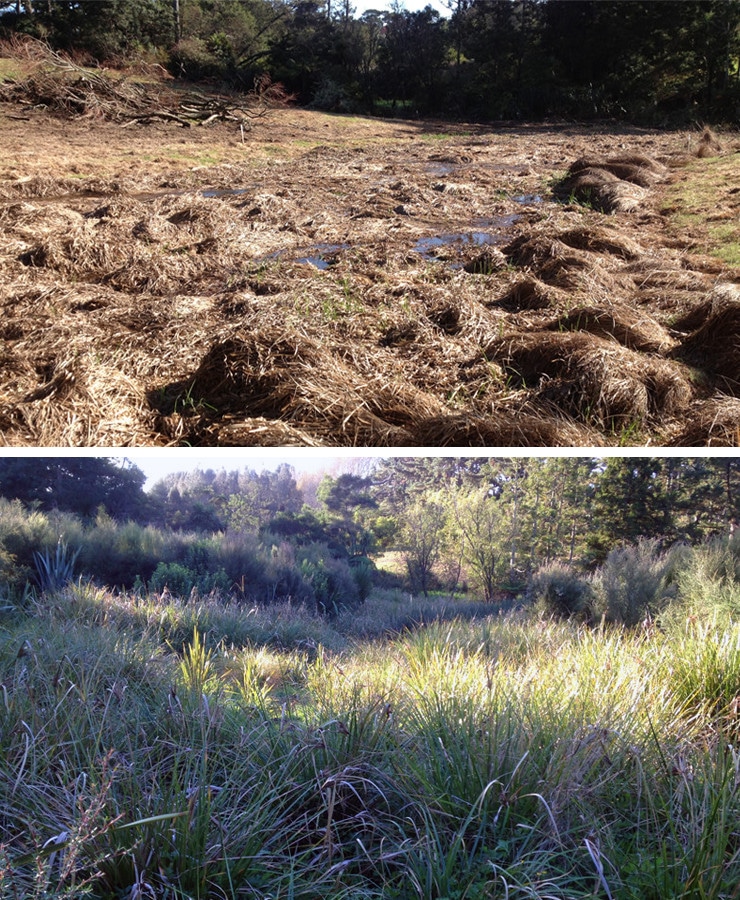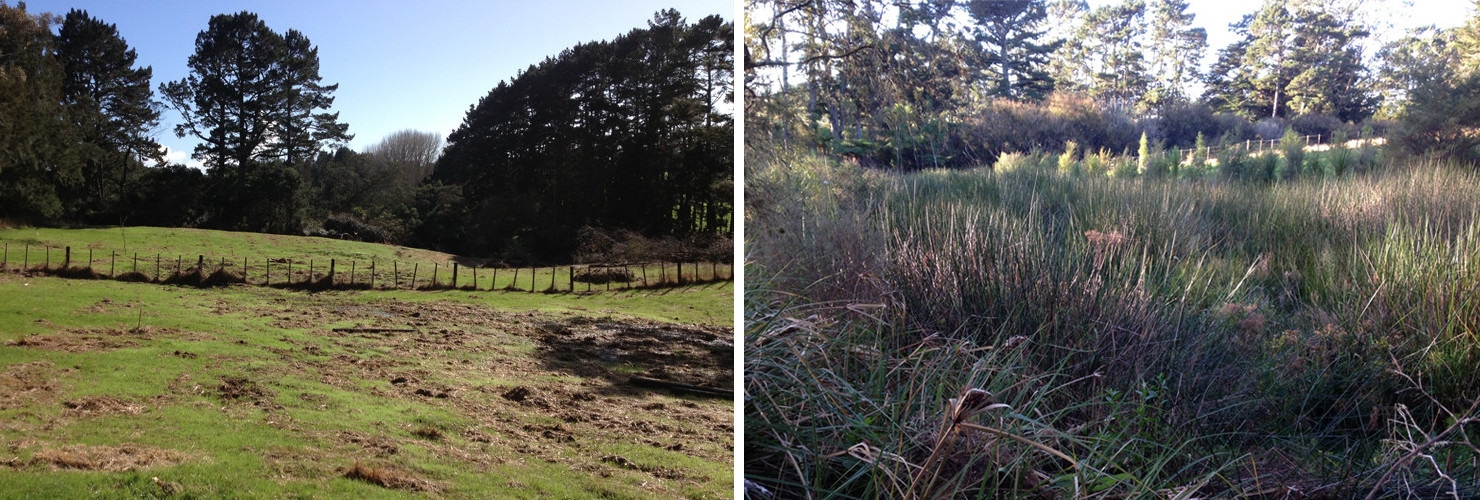By Myles Goodwin – Rural Subdivision Expert | Planning & Environmental Director Cato Bolam
In this article we discuss in more depth what is involved in restoring a degraded wetland to one that meets the Significant Ecological Area (SEA) criteria of the Auckland Unitary Plan. If the intended goal is a subdivision of the rural zoned property, 0.5ha (5,000m2 or 50m x 100m) of wetland of SEA quality is the aim. A degraded wetland would generally be an area of vegetation typically found in a wet area that has a high percentage cover of native wetland plants.
For restoration, you will be restoring an existing wetland that has been degraded by stock or other factors or restoring an area where a wetland was naturally present prior to drainage. A wetland cannot be created with earthworks in an area where no wetland naturally occurred. However, earthworks to block drainage channels, remove dams etc can be part of the restoration works. Starting ground conditions for a restoration would ideally be damp in summer and saturated over the winter, although parts of a wetland can dry out over summer, but it can still be wetland. Most wetlands will be on flat to gently sloping ground, often in the bottom of valleys and in floodplains. Seepages from slopes, especially on land with sandy soils, can form wetlands on steeper land. The area to be restored should be a continuous 0.5ha to make the area as acceptable to Council as possible. It is only the area of wet ground that will count towards the 0.5ha area.
Our initial site inspection would involve a check of the wetland area and its general suitability for restoration. If the initial check the area is close to the 0.5ha threshold, we recommend a survey to accurately confirm the area. It is better to know early if an area is too small than find this out later after completing restoration work. If area is large enough, and we believe the area is wet enough, was or is naturally wetland, and there are no other obstacles to restoration, work can begin. The first steps are usually weed control and fencing to remove stock. If remnant wetland plants are present, often removing stock will by itself lead to a large increase to native plant cover quite quickly. Any new fencing needs to be set at least 20m back from the wetland edge. In other cases, planting of appropriate native wetland plants will be needed. If a result is needed as fast as possible, e.g. two years, denser planting should be done. If the timeframe is 3 – 4 years, then a lower plant density can be used. Plants used in large numbers are often ones that naturally spread, so given time they spread and merge, forming a complete cover. Wetlands that remain saturated or very wet over summer can be restored faster than wetlands that dry over summer. This is because plants are never water limited over the sunniest and warmest months, and because plants that can be used in saturated areas are often faster growing than wetland plants that will tolerate summer drying.

Overall, a degraded and drained area of previous wetland can usually be restored back to a wetland of SEA quality within a 2–3-year time period. Once the subdivision process is complete, a protected wetland with wildlife, water quality and flood buffering qualities will be present on your property, and you will have contributed to increasing the total area of one of NZ’s most degraded ecosystems. Wetlands are also a landscape feature that we believe adds positively to the appearance of a property. Overall, there any many different reasons and benefits to undertaking a wetland restoration project. At Cato Bolam we have been undertaking wetland restoration work for over 20 years and have considerable experience, and 100’s of successful restoration projects behind us.
At Cato Bolam, we are experts in answering your questions on how to preserve wetlands, what is a wetland and why should we protect wetlands. We provide start to end subdivision services including planning, surveying, engineering, architecture and environmental.
Contact Myles Goodwin for an obligation free discussion via


